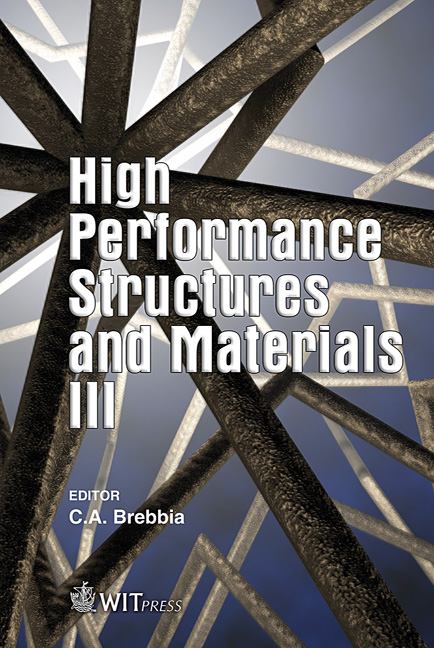Ring-shaped Crack Propagation In A Cylinder Under Nonsteady Cooling
Price
Free (open access)
Transaction
Volume
85
Pages
8
Published
2006
Size
414 kb
Paper DOI
10.2495/HPSM060511
Copyright
WIT Press
Author(s)
V. A. Zhornik, Yu. A. Prokopenko, A. A. Rybinskaya & P. A. Savochka
Abstract
A quasistatic problem of thermoelasticity for a solid infinite cylinder with a ringshaped crack is considered. The cylinder is enclosed in a rigid thin heat absorbing shell with a slip joint which reduces thermal impact. The external surface of the shell is subjected to a linear heat transfer by radiation to the surroundings. We assumed that the cylinder had initially a temperature changing along the radius and the surrounding temperature was a function of time. The main result is an expression obtained for the stress intensity factor depending on time. Various particular cases are considered obtained both by the authors of this paper and by other scientists. An analysis of the dependences of the stress intensity factor (SIF) on time shows that with an assigned critical SIF, there are minimum and maximum crack sizes below and above which the crack will not grow under the given cooling conditions. For these dimensions, the maximum of SIF does not reach the critical value. For intermediate crack sizes, growth of the crack begins at the moment SIF reaches the critical value. Here, the crack first grows irregularly to the size for which at the given moment of time SIF is equal to the critical value. Extension of so called \“hot ”cracks in a solid cylinder is also considered. These cracks arise when a cold cylinder is placed in a fusion of the same material at the melted temperature. Further on this cylinder is rapidly taken out of the fusion and on its surface the melting layer linked with the cylinder surface arise. Under cooling of the cylinder, residual tensile stresses arise in the layer which may cause growth of ring-shaped surface cracks which are dangerous for further exploitation of this system. Keywords: thermoelasticity, crack propagation, SIF, powdery covering.
Keywords
thermoelasticity, crack propagation, SIF, powdery covering.





